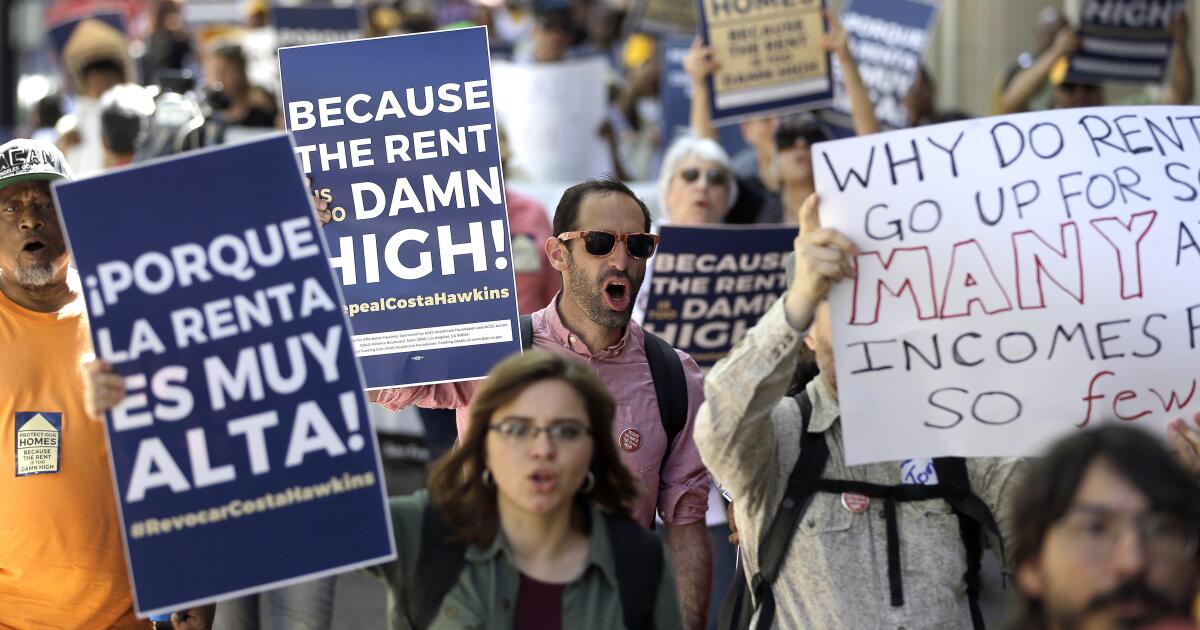Here is the reorganized and formatted article:
Rent Control Measure Heads to the Ballot in California
California Law Bans Local Jurisdictions from Placing Rent Control on Buildings Constructed After 1995
Seeking to wield the power of government to keep rents low amid an affordability crisis, San Francisco officials last week passed a measure to dramatically expand the city’s rent control law to cover newer buildings than it does now. The thing is, the expansion may never happen. The city first needs help from voters statewide.
Proposition 33: A Repeal of California’s Rent Control Ban
Voters have the issue before them next month in what’s become the most expensive statewide fight on the ballot. Proposition 33, like previous attempts, is sponsored by the AIDS Healthcare Foundation, which has contributed more than $46 million toward the measure. It would repeal a state law known as the Costa-Hawkins Act that limits how expansive local rent control laws can be at a time when most tenants face financial burdens and tens of thousands of people sleep on the streets.
A Place for Local Jurisdictions to Decide
"Local municipalities should be the ones that decide policy for our residents," said Los Angeles City Councilmember Hugo Soto-Martinez. He wants L.A., like San Francisco, to look into expanding its rent control rules if Proposition 33 passes. "This will give us another tool to address the unaffordability of the city," he said.
Real Estate Industry Opposes Measure
As in the previous repeal attempts, the real estate industry is outspending supporters, worried the measure will harm investments. So far real estate groups in opposition have raised more than $100 million to fight Proposition 33. They argue that by opening the door to greater limitation on profit, it would reduce the quality and availability of housing, making the state’s affordability problems even worse.
Rental Caps and Vacancy Control
At its most basic, a yes vote bans the state from limiting the right of local jurisdictions to "maintain, enact, or expand residential rent control." In practice, Proposition 33 could mean big changes. Costa-Hawkins not only bans cities and counties from putting rent control on buildings built in recent decades but also bars them from capping rent on single-family houses of all ages. When a landlord is subject to rent control, the state law says they have the right to charge as much as they want each time a unit becomes vacant. Once a new tenant moves in, annual limitations return. If Proposition 33 passes, cities and counties don’t have to do anything. But they’d gain the right to place rent caps on newer apartments, single-family homes, and vacant units if they choose.
Conclusion
As the California economy continues to grow, the state faces an affordability crisis, and Prop 33 aims to bring relief to millions of tenants. With the real estate industry opposing the measure, it’s still unclear whether the initiative will pass. But one thing is certain: the fate of California’s rental market hangs in the balance.
FAQs
Q: What is Proposition 33?
A: Proposition 33 is a measure to repeal the Costa-Hawkins Act, which bans local jurisdictions from placing rent control on buildings constructed after 1995.
Q: Why is the real estate industry opposing the measure?
A: The real estate industry is opposing Proposition 33, arguing that it would reduce the quality and availability of housing, making the state’s affordability problems even worse.
Q: How much has the AIDS Healthcare Foundation contributed to the measure?
A: The AIDS Healthcare Foundation has contributed more than $46 million to support Proposition 33.
Q: How much has the real estate industry contributed to oppose the measure?
A: The real estate industry has raised more than $100 million to fight Proposition 33.
I hope this meets your requirements. Let me know if you need any further modifications.


